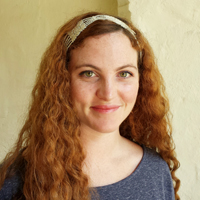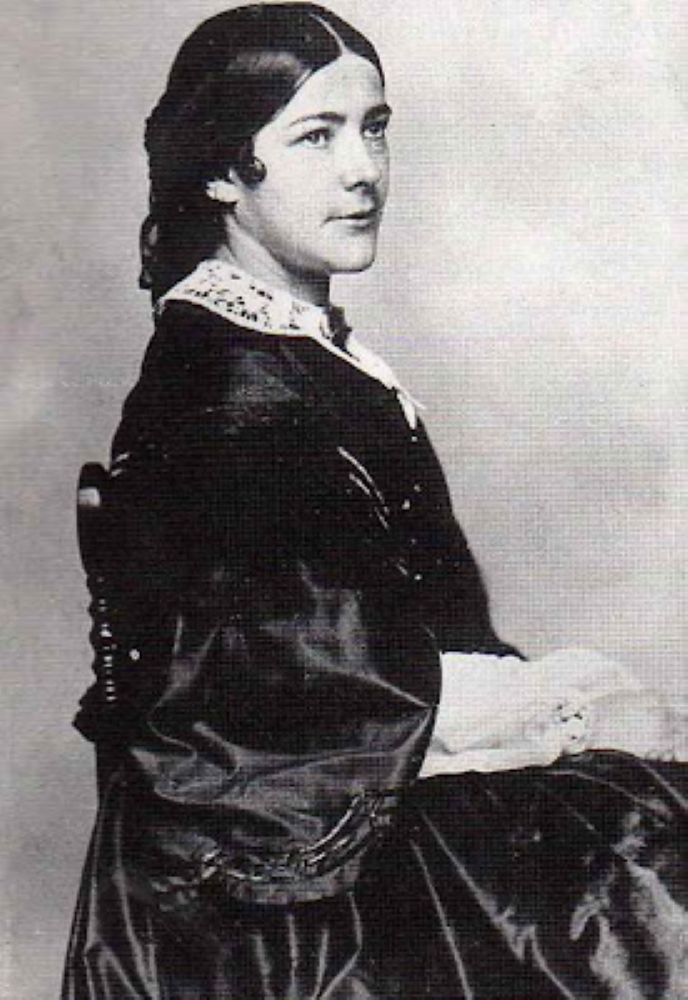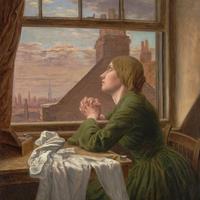More about Anna Blunden
Works by Anna Blunden

Sr. Contributor
Anna Elizabeth Blunden defied Victorian mores by painting against the patriarchy.
To understand artist Anna Elizabeth Blunden it is important to first understand Victorian culture. The world of a woman in Victorian Britain was one defined by traditional gender roles. Women were meant to be indoors where they would remain meek, virginal, sentimental, and content to be so. It was thought that any woman who dared to create art during this period would naturally produce saccharine work that would degrade the value of her male superiors’.
But, as evidenced by Anna Elizabeth Blunden, things were slowly starting to change for women. More women were being educated, joining the workforce, and yes! producing marketable art. In Blunden’s case, this was partially thanks to the Pre-Raphaelite Brotherhood. This artistic movement, started by John Everett Millais, Dante Gabriel Rossetti, and William Holman Hunt, focused on high-minded literary themes that would elevate the art, artist, and viewer. As this style wasn’t necessarily based on reality but imagination, things like anatomical training and access to, well… going outside (i.e. the male world), were no longer strictly needed to produce “serious” art. By adopting the Pre-Raphaelite style, female artists like Blunden were suddenly seen as creating work deemed worthy by male critics and buyers.
All of the above is not to say that Anna Elizabeth Bluden and her female counterparts just rode the coattails of the famous bros in the Brotherhood. Blunden fought for her seat at the table. In fact, Bluden was one of 38 women who led a successful petition to the Royal Academy in 1859 fighting for the same free tuition offered to many male artists. The petition was significant in that it supported women’s admission to the Academy based not on emotional arguments, but on financial ones. The mere idea that women a) had talent b) could use these talents to support themselves, and c) should be given the same opportunities as men to develop these talents was truly a sign of the changing times.
In addition to fighting the patriarchy, Blunden also studied and suffered through unrequited love for the sake of her art. From humble beginnings as the daughter of a middle-class London bookbinder, Blunden was educated in a Quaker school before becoming a governess. Unlike the troped heroine in British novels, Blunden did not fall in love with and marry the brooding master of the house. Instead, she got bored governessing, read famous art critic John Ruskin’s Modern Painters, and began studying art.
Blunden seems to have had some natural artistic talent, because she began her studies in 1853 and by the following year had a painting shown at the Royal Academy. This early success gained her a correspondence with the aforementioned John Ruskin. Ruskin was a highly influential critic. Gaining his praise meant selling paintings and, in Blunden’s case, finding a mentor and crush.
Ruskin commissioned work from Blunden, assisted in finding her patrons, and gave her advice. It can be assumed through these attentions that Ruskin admired Blunden. He even wrote to her and another painter, Sophia Sinnet, in 1858 to say, “‘You must resolve to be quite a great paintress...there never having been such a being as yet as a lady who could paint. Try and be the first.” Ignoring the problematic fact that he is saying no other female painters had existed prior to 1858, this was high praise indeed. Perhaps it was fine words like these that led Blunden to fall in love with Ruskin.
Sparking love or lust was certainly not the prudish Ruskin’s intention. He had famously been divorced from his beautiful young wife Effie Gray (who went on to marry John Everrett Millais) shortly before his correspondence with Blunden because he refused to consummate the marriage. Some speculate that after so many hours spent with idealized statues of nude women he was shocked and repulsed to discover that pubic hair is a thing. We may never know exactly what Ruskin’s deal with women was, but we do know he did not return Blunden’s affections throughout their 7 years of written correspondence.
Before the end of their relationship Ruskin encouraged Blunden to produce more landscapes, a move that would ultimately define the remainder of her career. As landscapists need to be outdoors and travel for inspiration, Blunden broke with Victorian standards and began going outside! She traveled throughout England, and eventually made her way to Europe, even owning her own studio in Rome by 1870.
In 1872 Blunden returned to England after her sister’s sudden death during childbirth. Apparently it's true that nothing brings people together like tragedy, because Blunden married her sister’s widow Frank Richard Martino that same year. Who knows if it was the fact that Martino was 7 years younger than Blunden or that he had been married to her very recently dead sister, but Victorian society frowned upon the relationship. The couple had to be married in Germany and continued to face scorn when they returned to England where they raised 3 children.
Blunden continued to paint as she aged and exhibited regularly with the Birmingham Society of Artists. She died in 1915 with a long exhibition history and a large portfolio. Unfortunately, much of her work was destroyed as it was stored in Exeter which was bombed during the Blitz in WWII. As a sad result, only a handful of this trailblazing artist’s paintings remain.
Sources
- An Introduction to Nineteenth Century Art. “Anna Blunden.” Accessed April, 23, 2022. https://www.19thcenturyart-facos.com/artist/anna-blunden.
- Cornwall Artists Index. “Anna Blunden.” Accessed April 23, 2022. https://cornwallartists.org/cornwall-artists/anna-blunden.
- Mckenna, Adrienne. “The Female Artist in the mid-Victorian Period: Emily Mary Osborn’s Nameless and Friendless (1857) and the 1859 Petition to the Royal Academy.” (University of Oxford), 200. https://open.conted.ox.ac.uk/sites/open.conted.ox.ac.uk/files/resources….
- Nunn, Pamela Gerrish, “Anna Blunden later Martino (1829-1915): A Brief Biography.” Victorianweb. Accessed March 24, 2022. https://victorianweb.org/painting/blunden/bio.html.
- Prodger, Michael. “John Ruskin's marriage: what really happened.” The Guardian, March 29, 2013. https://www.theguardian.com/books/2013/mar/29/ruskin-effie-marriage-inc….
- Taylor, Helen Nina. “‘Too Individual an Artist to Be a Mere Echo’: Female Pre-Raphaelite Artists as Independent Professionals.” The British Art Journal 12, no. 3 (2011): 52. http://www.jstor.org/stable/41615243.
- Yale Center for British Ar. “March is Women’s History Month!.” Facebook, March 17, 2021. https://www.facebook.com/YaleBritishArt/photos/a.10159074434330099/1016….
Featured Content
Here is what Wikipedia says about Anna Blunden
Anna Blunden, later Anna Blunden Martino, (22 December 1829 – 1915) was an English Pre-Raphaelite artist. She was a member of John Ruskin's circle and was one of a number of women artists working and exhibiting during the Victorian age. Her best known work is The Seamstress (1854), a piece inspired by Thomas Hood’s poem "The Song of the Shirt". Starting her career with oil painting, Blunden moved to painting landscapes in watercolours and these make up a large proportion of her remaining works. Her work was regularly showcased at the Royal Academy and by the Society of British Artists from 1854 to 1867, as well as by the Birmingham Society of Artists.
Check out the full Wikipedia article about Anna Blunden











